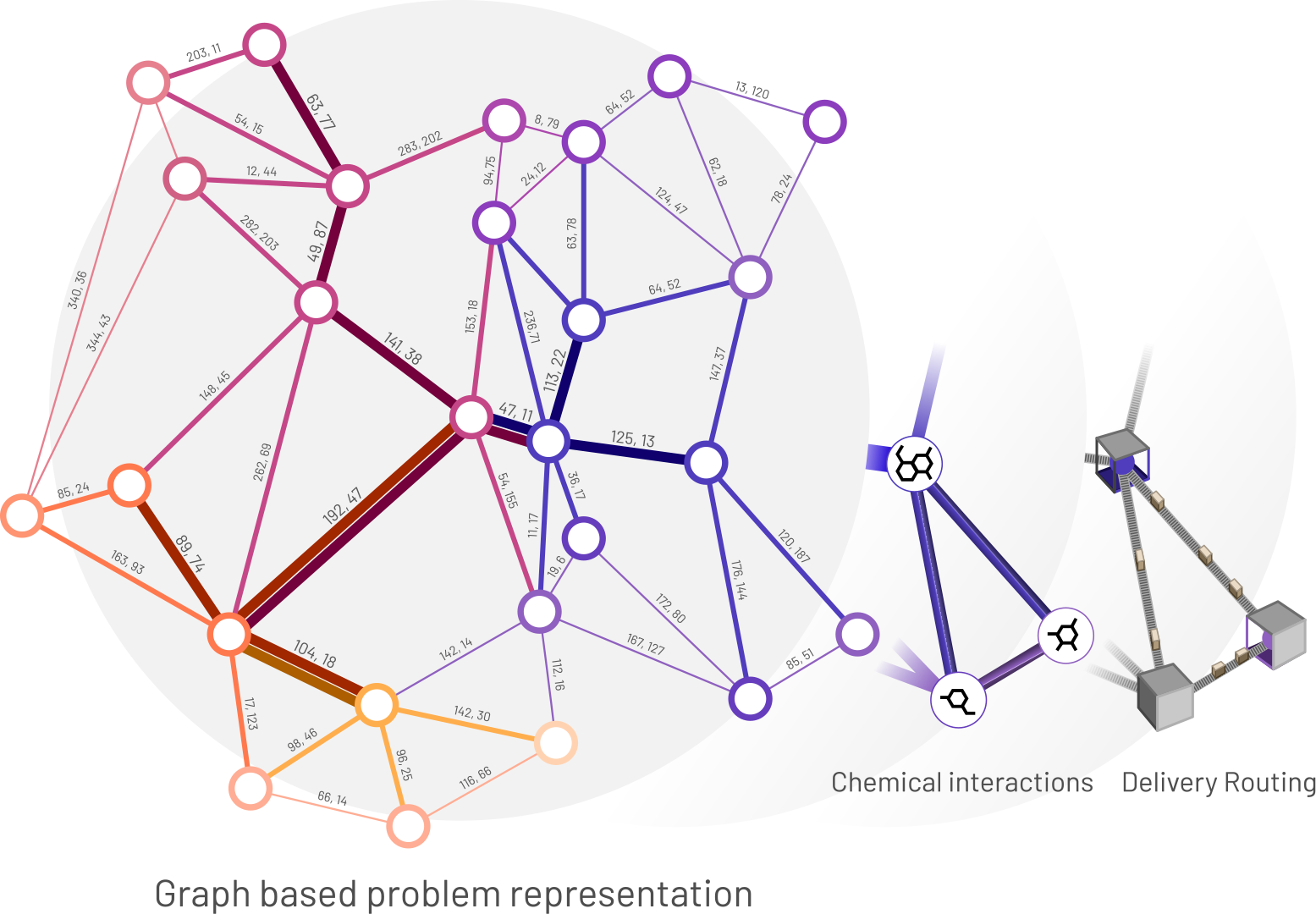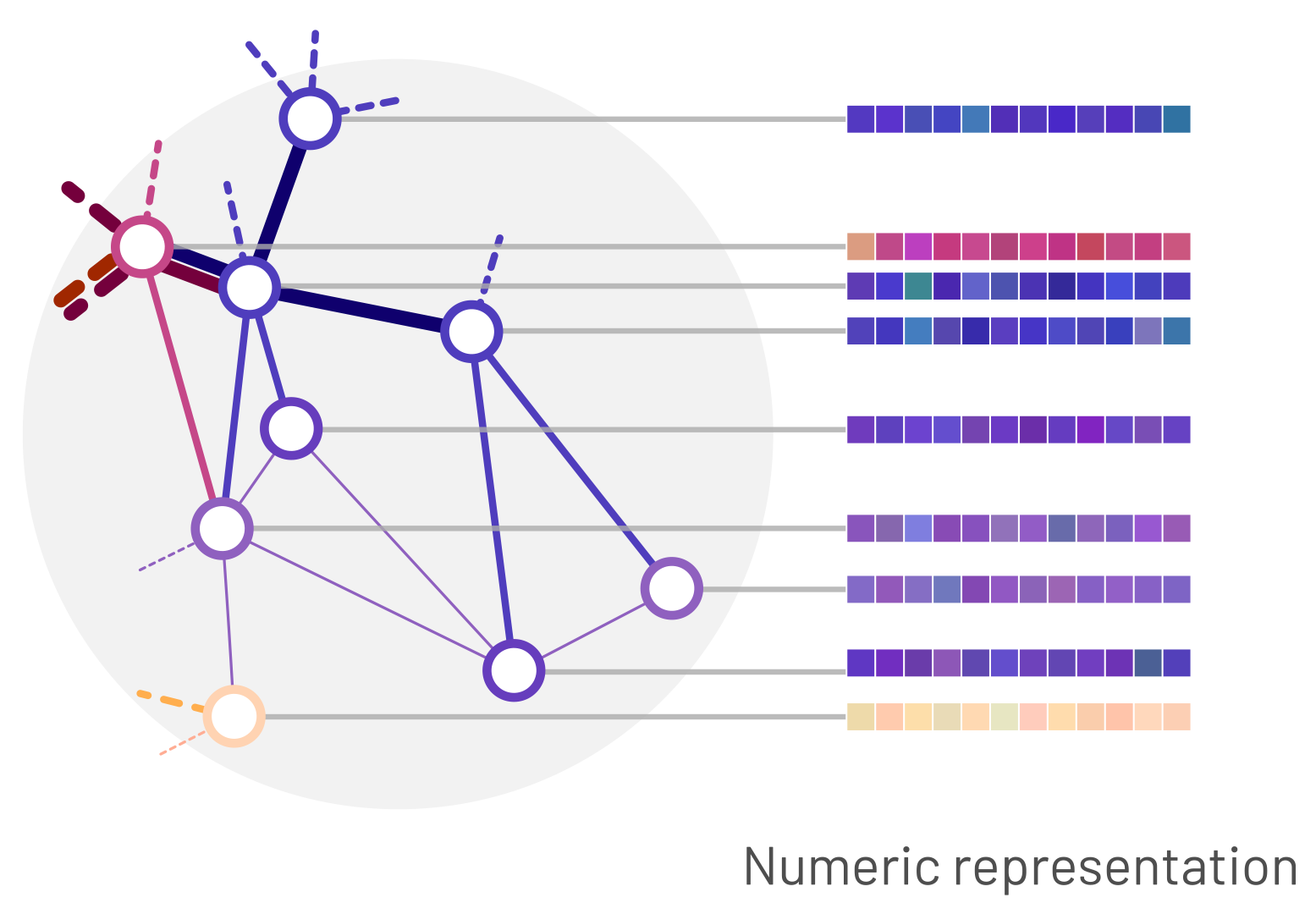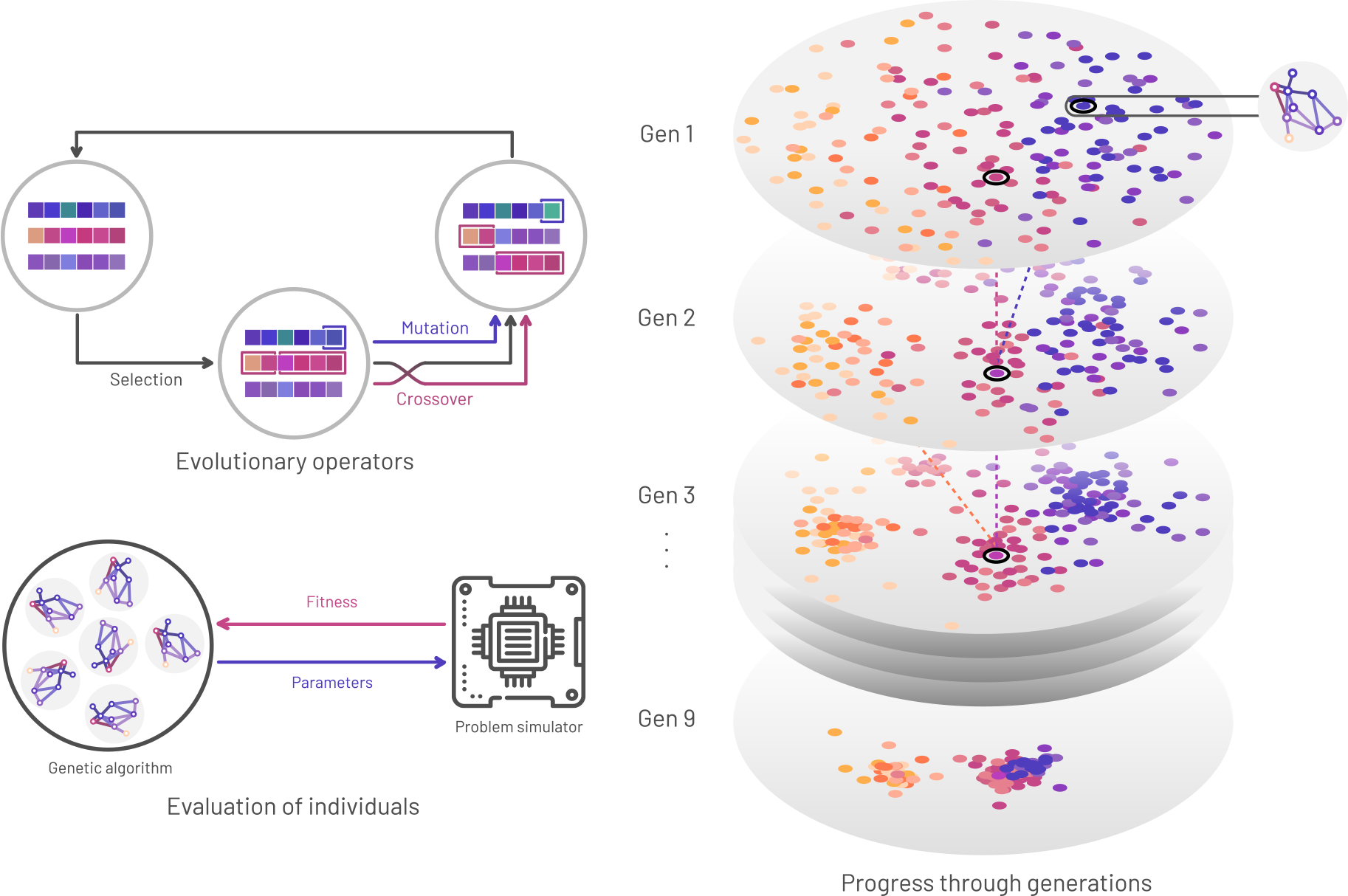Introducing Zenith: A Deep Learning Platform for Optimization
AIRecursive2024-05-24
In the realm of business and operations, optimizing complex systems is a central challenge, particularly in sectors like manufacturing, pharmaceuticals, and power production. These industries often deal with extensive operational pipelines where the performance of one component can have cascading effects on others, creating a network of interdependencies. Traditionally, the optimization of these systems is handled one step at a time, which may not capture potential efficiencies or the broader impact of changes across the system.
At Recursive, we develop methods that optimize such systems from end-to-end. This approach increases production efficiencies and reduces greenhouse gas emissions by enhancing the overall system's performance rather than its individual parts. Our approach surpasses traditional optimization methods that struggle with the complexity and scale of these tasks and are unsuitable for achieving the desired outcomes efficiently.

Zenith, our deep learning platform, addresses these challenges by leveraging computational optimization techniques that significantly improve upon the solutions that human experts can create. By adopting AI-driven strategies, Zenith is capable of exploring a wider range of potential solutions quickly and with greater precision, thus enabling more effective system-wide optimizations.
Why is Combinatorial Optimization Difficult?
Traditional methods struggle significantly in the realm of combinatorial optimization due to the nature of the problems at hand. Combinatorial optimization involves manipulating discrete parameters, akin to repositioning pieces on a chessboard to achieve the best strategic setup. Each piece can be placed on specific squares, and each potential configuration could vastly differ from another, impacting the outcome significantly.
This contrasts sharply with traditional optimization tasks, such as determining the optimal speed for a car to maximize fuel efficiency. In such scenarios, even minor adjustments to speed result in small, predictable changes in fuel consumption, allowing for a smooth and gradual optimization process. This is visually represented by a smooth landscape where gradual adjustments lead towards an optimal point (as shown in the image below).

In contrast, combinatorial optimization does not allow for such minor tweaks. Since the solutions involve discrete choices (like switches being either on or off), there is no way to 'nudge' the solution slightly in one direction and measure the effect. This absence of a gradient to follow makes the problem non-continuous and dramatically increases the complexity of finding the optimal solution. Consequently, most approaches resort to trial and error or rely on simple heuristic methods, which are computationally intensive and often fail to locate the best solutions. This methodological gap underscores the need for innovative approaches like those implemented by Zenith, which rethink how these challenging problems are tackled.
Examples Where Combinatorial Optimization Can Help
The potential of combinatorial optimization to revolutionize diverse sectors is immense, with each application bringing specific benefits that translate into direct business advantages.
Delivery Route Optimization and Logistics
In the logistics industry, optimizing delivery routes is crucial for efficiency. Currently, routes are often planned based on simple heuristics that consider distance but might ignore other variables like traffic patterns or delivery time windows. This can lead to suboptimal paths that waste time and fuel. By applying combinatorial optimization, delivery routes can be strategically designed to account for multiple factors simultaneously, such as shortest paths, least congested routes, and specific time slots for deliveries. This optimization not only reduces fuel consumption and delivery times but also enhances customer satisfaction through more reliable delivery schedules. A logistics company that does not implement best-in class route optimization not only incurs wasted costs, it risks losing market position to competitors that will outperform them using these technologies.
Drug Formulation Optimization in Pharmaceuticals
The process of drug formulation involves finding the optimal combination and proportion of various ingredients to achieve a desired therapeutic effect while minimizing side effects. Traditionally, this process is performed by trial and error, consuming considerable time and resources. Combinatorial optimization transforms the approach by treating the formulation as a complex puzzle where each combination of ingredients and their quantities can be precisely calculated to optimize efficacy. This method can significantly speed up the development process, reduce costs, and bring more effective drugs to market faster, providing a competitive edge to pharmaceutical companies.
Industrial Machinery Optimization
In the manufacturing sector and related fields,, the arrangement of machinery and the settings of complex systems like HVAC are critical for operational efficiency. Traditionally, the layout of factory floors and the settings of HVAC systems are often determined based on static criteria that do not account for dynamic operational conditions. Combinatorial optimization enables a more dynamic approach by considering various operational scenarios to determine the most efficient layouts and settings. For example, optimizing the placement of machinery can minimize the time materials are in transit between processes, reducing cycle times and increasing productivity. Similarly, optimizing HVAC settings in real-time based on factors such as occupancy and external weather conditions can drastically reduce energy consumption. The result is a significant reduction in operational costs and an enhancement in production efficiency, contributing directly to the bottom line.
Businesses that are leveraging combinatorial optimization are achieving a level of operational efficiency and product effectiveness that is not attainable with traditional methods. This optimization not only brings cost savings but also fosters innovation, setting the stage for next-generation infrastructure and operations.
How Zenith Addresses Combinatorial Optimization Challenges with AI
Zenith's approach to combinatorial optimization incorporates advanced techniques from machine learning and graph theory to tackle the complex nature of these problems efficiently. The following is a detailed breakdown of the processes involved:
Graph Representation
Zenith models the elements of the problem as nodes in a graph, with the relationships between these elements represented as edges. In drug formulation, each ingredient would be a node and the chemical interactions between different ingredients would be the edges. This graph-based approach allows for a structured analysis of the problem, providing a clear framework to assess how changes in one element affect others.

Embeddings for Smoothing
Due to the discrete nature of combinatorial optimization problems, traditional gradient-based optimization methods are not applicable. Zenith utilizes embeddings to map these discrete elements into a continuous, high-dimensional space. This mapping process transforms the optimization landscape into a form that is more amenable to computational analysis and manipulation. The embeddings help to identify potential directions for exploration in the solution space, creating a way to estimate the impact of altering different elements even though the problem itself does not allow for small, continuous adjustments.

Discrete Optimizers
Zenith employs specialized optimization algorithms designed to handle the discrete and structured nature of the problems. These include evolutionary algorithms and graph neural network optimizers. Evolutionary algorithms are particularly effective as they generate a wide range of potential solutions and evolve these solutions over time based on their performance, mimicking natural selection. Graph neural network optimizers leverage the graph structure of the problem, enabling the optimizer to consider the complex interactions and dependencies between elements to suggest optimal configurations.
This methodological framework ensures that Zenith can systematically explore and evaluate a vast array of possible solutions, significantly increasing the probability of identifying the most effective configurations. This process not only streamlines the search for optimal solutions but also reduces the computational load compared to traditional methods, which often rely on exhaustive search or simplistic heuristics.
Zenith’s technology strength goes beyond traditional methods by combining discrete optimization algorithms with deep learning features, harvesting the best of two worlds. Discrete optimization algorithms by themselves are often limited to perform optimization of problems that can be described in explicit mathematical detail. Deep learning methods on the other hand find data-driven solutions, which means that the problem description is inferred from examples. Such data-driven solutions require a lot of examples and deep learning method can often only draw limited benefits from explicit problem formulations, even if they are available. The patterns developed in Zenith allow a combination of both approaches, resulting in a system that can perform optimization for extremely complex problems, taking full advantage of available data and available expert knowledge, providing interpretable solutions following controllable parameters.

Use Cases for Zenith
Zenith’s use of these advanced technologies aims to transform physical infrastructure into highly optimized systems. We can significantly boost productivity in industries such as manufacturing, energy, and transportation, by increasing the efficiency of layouts and operational sequences. A more efficiently designed factory floor layout, optimized for minimal movement of materials, can reduce production times and lower the energy required for manufacturing operations.
By optimizing energy use in large systems, such as HVAC systems in commercial buildings or routing in logistics, we can achieve substantial reductions in carbon emissions. Optimized routes mean fewer miles driven, less fuel consumed, and reduced emissions. Similarly, smartly regulated energy systems in buildings can maintain comfort while minimizing energy waste, contributing to a significant decrease in greenhouse gas emissions.
In the pharmaceutical and healthcare sectors, Zenith's optimization technology brings best-in-class solutions to a company’s drug development processes and patient care. Advanced optimization techniques for drug formulation can reduce overall development time and associated costs, and the precise optimization of compound combinations and dosages can lead to more effective drugs with reduced side effects, directly improving patient outcomes.
Furthermore, in healthcare management, applying combinatorial optimization to scheduling, appointment systems, and resource distribution can enhance operational efficiency. By optimizing these aspects, healthcare facilities can manage patient flow more effectively, utilize staff more efficiently, and minimize the unnecessary use of resources. These changes can lead to reduced operational costs and improved patient care, providing tangible benefits to healthcare systems.
Future Vision for Zenith
We see a promising potential in the integration of quantum computing within our optimization processes. Quantum computing holds the promise of exponentially faster computations compared to classical computers, particularly suited for problems where potential solutions grow combinatorially. Quantum algorithms could dramatically accelerate the identification of optimal configurations in logistics or complex manufacturing processes, where traditional methods falter due to computational limits.
Zenith’s current trajectory includes cutting-edge developments across several domains. We are expanding our toolkit to include large transformer models and state-of-the-art reinforcement learning techniques, which offer significant improvements in handling complex optimization tasks. These AI models can analyze vast amounts of data and learn optimal strategies across a range of scenarios, providing solutions that are both innovative and effective.
Author
Co-founder and CEO
Tiago Ramalho
Tiago holds a Master's degree in Theoretical/Mathematical Physics and a PhD in Biophysics from Ludwig-Maximilians University Munich. After graduation, he joined Google DeepMind as a research engineer. There he worked on a number cutting-edge research projects which led to publications in international machine learning conferences and scientific journals such as Nature. He then joined Cogent Labs, a multinational Tokyo based AI start-up, as a lead research scientist. In August 2020 co-founded Recursive Inc, and is currently CEO.